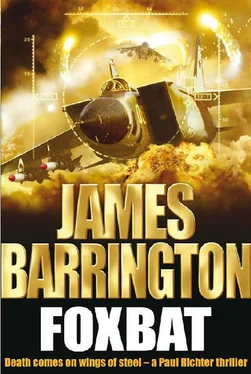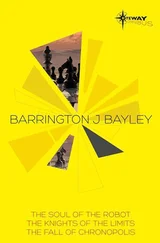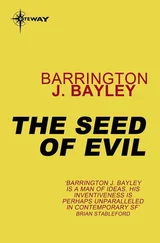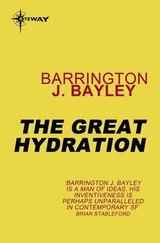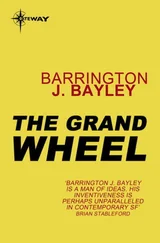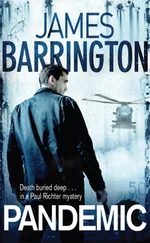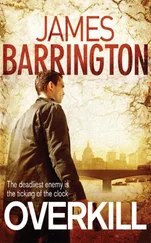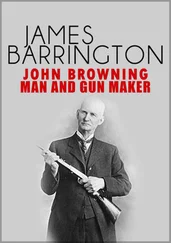And that was now in the hands of the commanding officer at Chiha-ri.
Oval Office, White House, 1600 Pennsylvania Avenue, Washington, DC
‘Mr President, we’ve had a message from the Enterprise . The captain reports that one of their Hawkeyes detected a four-aircraft raid approaching the North Korean missile bases.’
‘Good,’ the President nodded. ‘It looks like the Agency’s idea worked, General.’
Donald Sterling shook his head. ‘No, sir. The carrier also reports that the raid turned away from the coast at the last moment, apparently without releasing any weapons.’
‘That’s a fucking disaster,’ interrupted the Secretary of Defense, his voice loud and angry. ‘If those missiles are still on the launch pads, Japan’s at risk, and there’s nothing we can do about it.’
‘We could still—’ General Sterling began, but was interrupted by the ringing of one of the telephones on the President’s desk.
‘Just a moment, Don.’ The President picked up the phone and listened for a few seconds. ‘OK, send them in.’
There was a brief double-tap on the door, and then Walter Hicks and Richard Muldoon entered the Oval Office.
‘You heard about the British chickening out?’ snarled the Secretary of Defense.
‘No. What happened?’
Sterling explained about the signal from the Enterprise . When he’d finished, Hicks and Muldoon exchanged glances.
‘It looks like somebody over there’s a lot smarter than we are,’ Hicks said.
‘You need to explain that.’
‘We’ve got the latest analysis from N-PIC. It now looks like the No-dong missiles on the east coast launch pads are fakes.’
‘Jesus.’
‘We made those bases the highest priority for N-PIC, and we’ve had as near continuous surveillance as is possible within the constraints of the Keyhole system. We’ve analysed the images, and we’re sure the missiles on the pads are real No-dongs, but everything else suggests they’re not armed or fuelled. We’ve seen fuelling apparently taking place, but there’s been no change in the temperature of the missiles, which means although the hoses were connected, no fuel was actually transferred.
‘And we’ve got suspicions about the warheads as well. They looked right in the satellite photographs, but the maintainers handling them weren’t all wearing protective clothing and at Mayang, in particular, mounting the warhead took far longer than we would have expected.’
‘Maybe they had a problem with it,’ the President said.
‘Maybe they did, sir, but the alternative explanation is that they wanted us to see and recognize the warhead, to convince us that the missile was being prepared for launch against Japan. It’s significant that the North Koreans usually keep their aircraft and missiles under cover until they’re ready to actually launch them, but at these four bases the No-dongs have been sitting visible on the pads for the last couple of days. We think these four missile sites were chosen deliberately, because they’re near the coast and relatively easy to attack, and that therefore Pyongyang’s intention was to entice us to hit them, because that would provide the excuse they needed to cross the DMZ into South Korea. They could then claim they were acting in self-defence, following an unprovoked attack by us or the South Koreans.’
‘Devious bastards. So what happened with the British Harriers? Did somebody get a message to them?’
‘We’ve no idea, sir. It’s possible someone on the British carrier put two and two together, or maybe one of the pilots worked it out. That doesn’t matter. What’s chiefly important is that the raid didn’t happen.’
‘So what now?’
‘We’re not out of the wood yet, obviously. The North Koreans may not have obtained the excuse they’d like to start an invasion, but that doesn’t mean they won’t go ahead anyway. In fact, we’re reasonably certain that’s exactly what they’re intending.’
‘You’ve got evidence to back up that assertion?’ the Secretary of Defense asked.
‘Yes, sir. We’ve seen troops, tanks and armour at North Korean bases moving towards the DMZ and then holding position, presumably waiting for the word to advance. We’ve detected other foot-soldiers entering what we believe are tunnels running into South Korea, and there’s a lot of activity in the coastal areas on both sides of the peninsula. We think they could be groups of special forces preparing to infiltrate south of the DMZ. But what concerns us most, Mr President, is this.’
Walter Hicks opened his briefcase and took out half a dozen black-and-white photographs. ‘These pictures are less than one hour old. This is the North Korean base at Chiha-ri, just north of the DMZ, and we believe this object here’ – he pointed – ‘is a modified HY-2 Seersucker cruise missile. It’s mounted on a trailer and they’re just moving it into the hardened shelter.
‘The weapon’s a Chinese development of the old Russian P-15 Styx anti-ship missile, and it’s been exported to a number of countries including Iraq and North Korea. Pyongyang’s been playing about with these since the early nineties. Back in ninety-four they test-flew one that covered a hundred miles, and three years later they’d increased the range to over one hundred twenty miles. That’s when our military christened the weapon the AG-1.
‘Until now we’d no idea what else they’ve been doing with the Seersucker, but these pictures suggest they’ve succeeded in developing a land-based variant, and that’s real bad news. It’s an old design, but it’s still a serious weapon. It’s big and bulky, but for the North Koreans that’s actually an advantage, because they can put whatever they like in it – different guidance system, bigger fuel tanks or whatever – without having to modify the basic shape.’
‘What are we talking about here in terms of payload and performance? And will the PAC-3 Patriot batteries south of the DMZ be able to engage it?’
Hicks shook his head. ‘To answer your second question first, Mr President, probably not, because of its flight profile. The Patriot’s very good at intercepting medium- and high-level targets, but it was never designed to engage fast low-flying targets like cruise missiles. It’s not generally known, but in March and April two thousand three, during the Second Gulf War, the Iraqis fired five obsolete Chinese-built cruise missiles into Kuwait. There were no casualties, and the damage they caused was minimal, but the Patriot radars never even saw them.
‘As for the Seersucker’s performance, the original HY-2 had a liquid-fuelled motor that gave it just subsonic performance – about Mach zero decimal nine – and a range of about sixty miles carrying a thousand-pound warhead. Its avionics were quite sophisticated, with a radio altimeter, TV guidance system, infrared seeker head and active radar guidance as it closed with the target.
‘Those data are based on the Chinese version from the early nineties – I’d be prepared to bet serious money that the North Koreans have made significant improvements in almost all areas. We already know they’ve doubled its effective range.’
‘What do you think they intend doing with them?’
‘If I was running this operation,’ General Sterling answered the question, ‘I’d prepare three or four, strap a low-yield nuclear weapon on each of them and set them to air-burst over South Korea on a line running east–west through Seoul. That would pretty much wipe out the CFC’s computers and communication systems and everything else that runs on printed-circuit boards. Then I’d use artillery to soften up the enemy troops, and send in the army. And there wouldn’t be a damn thing we could do to stop it.’
Читать дальше
